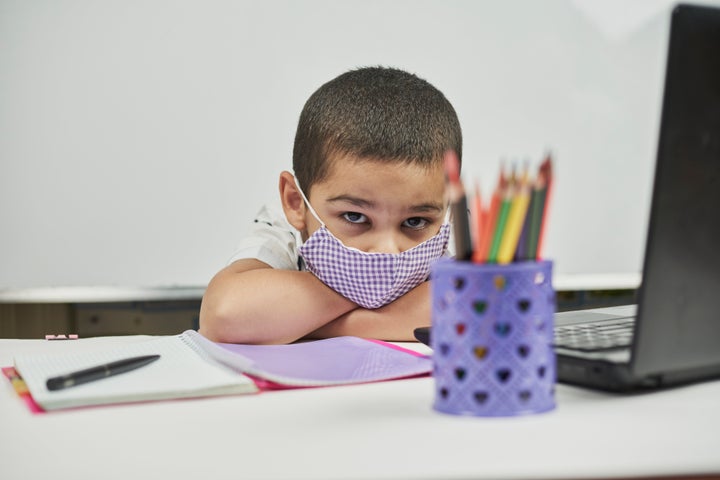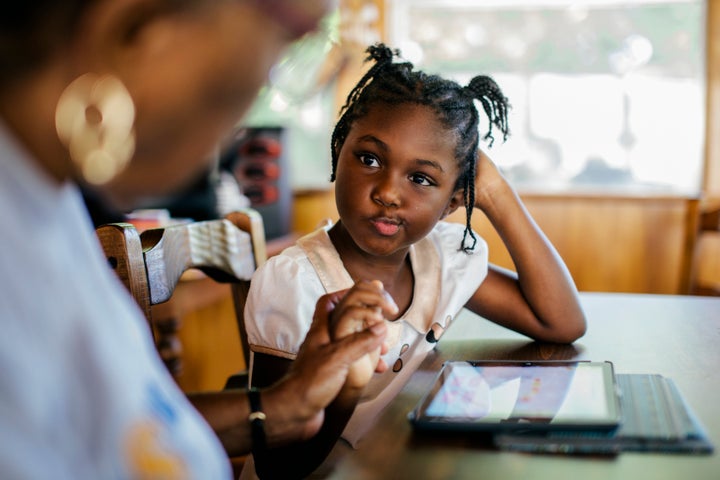How do we prepare our children against discrimination? This cannot just be a one-off conversation. All children can benefit from talking openly about diversity and bias. But for kids in groups more likely to be a target of discrimination, such conversations can be even more critical.
We know from research conducted by the American Association of Pediatrics that experiencing racial discrimination or even seeing racial discrimination can have a huge mental and physical impact on a child’s health.
Children can also be affected by any injustice they see around them. Perceived discrimination has been linked to physical and mental health problems including anxiety, depression, obesity, high blood pressure and substance abuse. Many of these problems are believed to stem from the chronic stress associated with being a potential target of discrimination. Anxiety leads to the release of the stress hormone cortisol, which can lead to chronic health conditions.
Discrimination-related stress can also affect how kids feel about themselves. It might prevent them from speaking up in class, or from participating in activities that are important to them.

Racial bullying in classrooms and playgrounds – and increasingly online – can take various forms, such as being treated differently or excluded because of skin colour, name-calling or jokes about skin colour, nationality or culture.
“You cannot play with us because you wear a turban.”
“You smell of curry.”
“Why do you have such weird hair?”
Several parents, for instance, have mentioned to me that their black or dual-heritage children have their hair touched a lot even by strangers. ‘Mixedness’ can often be fetishised, which is also a form of racial discrimination and prejudice. Children should be equipped to know how to handle it if strangers ask to touch their hair, or touch it without their permission. Children have to be taught boundaries around their own bodies, and learn to say that it is not OK for others to comment on their skin colour or their hair. They should, in turn, also learn that it is not OK to go and touch a child’s hair or call it “crazy” or “weird”.
So it is important to talk to children and empower them in knowing how to deal with an unfairness associated with their own skin colour. Talking openly with children can prepare them for dealing with discrimination and help them keep discrimination-related stress in check.
If you have been talking about race and discrimination for a while, then this can be an ongoing conversation and children will already have some understanding of why they are being perceived as different. Children can be prepared to recognise signs of racism, and to have some prepared comeback remarks. Teach young people how to speak up about disrespectful language directed at themselves or others, and set boundaries, by saying things such as:
“That didn’t sound kind.”
“That sounds prejudiced.”
“Please stop saying that.”
“Please move out of my way.”
Role play can help children prepare reactions to any situation where they feel threatened or excluded. Also be clear that you will understand if they don’t feel safe speaking up. In such situations, they should feel OK to get adult help.

At this young age, while it is important that children learn to stand up for themselves where they feel comfortable to do so, they should not be dealing with such situations on their own, and they should feel empowered to ask for help, even from busy adults. Asking for help and support is not a sign of weakness. Asking for help in a clear manner is important with words such as: “Please listen to me. This is important.”
Give them tools so that they can bounce these harmful or insulting things back and understand that they do not have to internalise any racism they encounter. The ‘dustbin’ technique can help children actively refuse to accept any insults hurled at them. For example, if someone says to them “I don’t want to sit with you” or “I don’t want to be your friend”, they can metaphorically throw these words away rather than absorbing and internalising them, by saying “I will find someone else to sit with” or “I will find another friend”.
If a child has been supported in developing a strong identity and self-worth, they can be taught to tackle exclusion with resilience.
Depending on the level of discrimination or bullying a child has faced, the school should be involved in this too. School governors and school boards have to be mindful of the laws that cover racial discrimination and bullying. If a child has felt excluded, then their feelings are valid.
Saying “I am sure they didn’t mean it” is not the right approach. Instead, help children find the language to articulate how they are feeling. Give them space for their feelings, even if our natural urge is to jump in and reassure them or distract them from feeling uncomfortable or unhappy.
When you talk about history with your children, it is important to talk about the activism within these communities who faced such oppression, and the resilience and strength that people showed. Doing so helps children understand that people can always stand up and speak up. This can empower children so that they do not see themselves or others from their heritage as victims.
For instance, Viola Desmond, a black woman, challenged racial segregation in Nova Scotia in 1946 and was later the first Canadian woman to be featured on a $10 bill. Desmond’s story can show children the idea that people can make a change based on their actions. This can show them that if they ever face racism they have the choice to resist.
Finally, if you’ve had conversations with your child about how people can treat others differently because of their skin colour or other differences, then they will be better prepared to recognise it, and deal with it when it happens to them. They will know that any exclusion has less to do with them, and more with the stereotypes and prejudices that others hold.
An anti-racism checklist we can all follow
Maintain diversity in toys and books.
Decolonise the curriculum and education.
Question and actively challenge negative views and stereotypes children see in movies, cartoons, books.
Ask teachers questions about what books children are reading, and what your school’s racial education framework and policy is.
Be mindful of your own implicit and overt actions and words.
Actively challenge prejudiced views and statements rather than ignoring them. The aim is not tolerance but full integration and acceptance.
Use family stories and intergenerational narratives to inspire pride in their own culture and heritage.
Talk about privilege and how it affects how people are treated in society.
Teach children not to dismiss other people’s experiences of racism, but be respectful of their feelings.
Help children understand that racism is much more than just someone being mean or rude.
Empower them with role play, tools and strategies to counter any racism they encounter.
Maintain open-ended conversations and discussions to help you understand how children see themselves and others.
Ask questions such as “What makes you different? What makes you special?” that can help children explore self-identity.
This is an extract from Wish We Knew What To Say: Talking With Children About Race by Dr Pragya Agarwal, published by Dialogue Books –the Wish We Knew What To Say podcast is available wherever you listen to podcasts.
